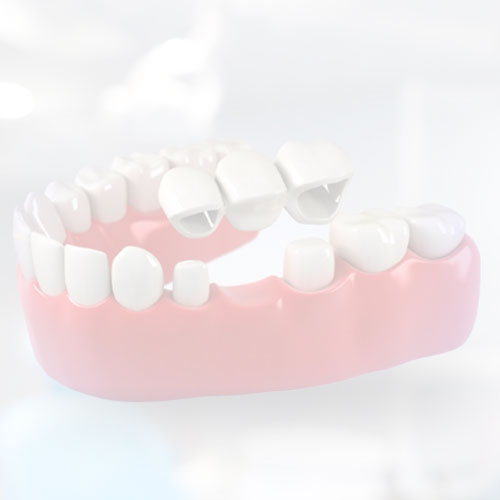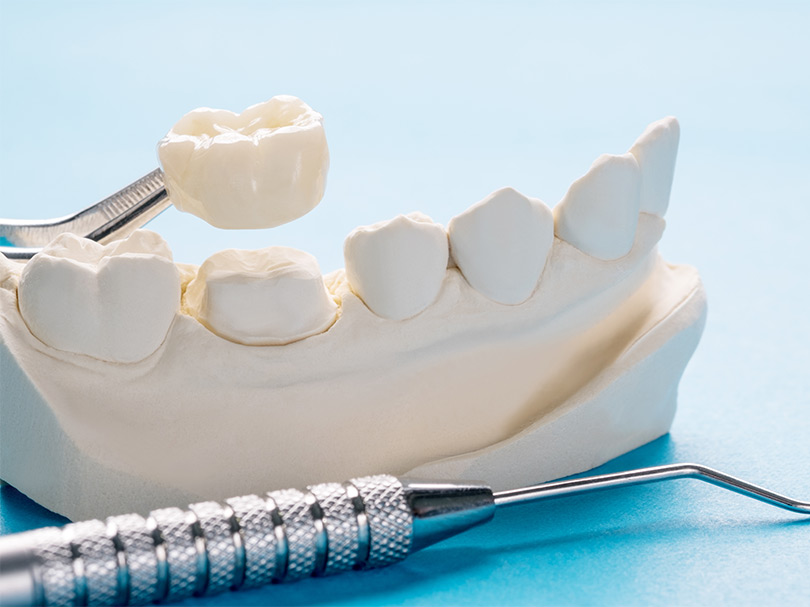What Crowns and Bridges?
Dental Crowns are a tooth-shaped cap or crown placed on the tooth to restore the tooth’s shape, size, and appearance. Dental Bridges link the gap formed by one or more removed teeth.
How Are a Crown and Bridge Fitted?
Crowns are used when a current tooth is broken, fractured or weakened. The tooth is smoothed down and reshaped into a smaller size. Decay is removed, and the tooth structure is restored to hold the crown. The crown fits like a cap on the newly shaped tooth and is cemented into position.
A bridge consists of false teeth rigidly connected between two crowns. The teeth on either side of the gap are made for crowns, and the bridge is cemented into place. Once a bridge is cemented into the position, it looks and functions just like natural teeth.
Advantages of Crowns & Bridges
Crowns and bridges are used to fix several various dental problems.

We Offer Solutions for Tooth Protection and Repair

Restores the Tooth That Has Been Worn Down

Cover a Dental Implant

Cover a Stained Tooth

Make a cosmetic modification

Guard a root canal

Types of Crowns & Bridges
Dental Crowns and Bridges Treatment at affordable cost

The Dental Bridge Works
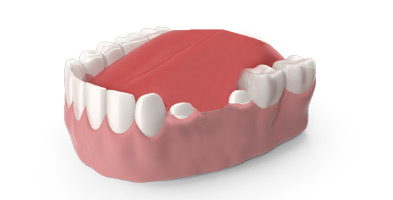
Preparation of Adjacent Teeth
The abutment teeth must first be filed into the proper form before the bridge can be affixed to them.
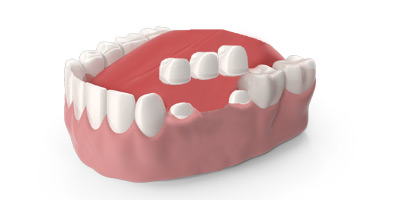
Bridge Construction
A mould of your teeth is taken using a special dental putty and sent to the lab for the bridge to be created.
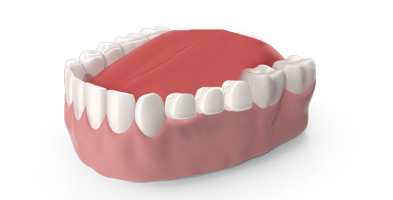
Bridge placement
Once the mould is received by your dentist, the bridge will be cemented in the empty space and the crowns on the adjacent teeth.
Before & After Gallery
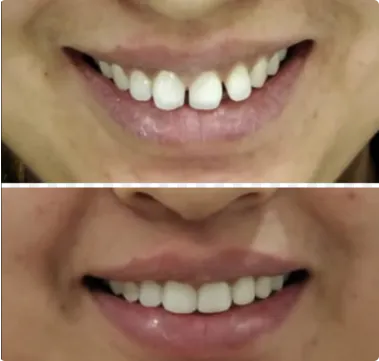
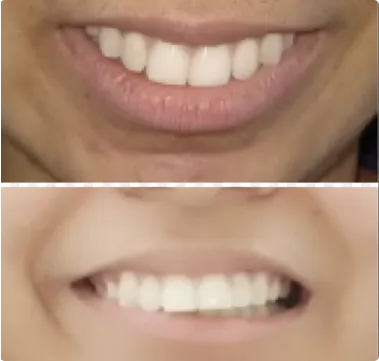
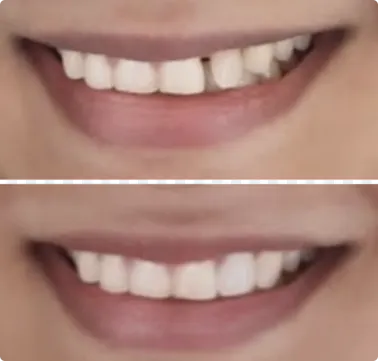
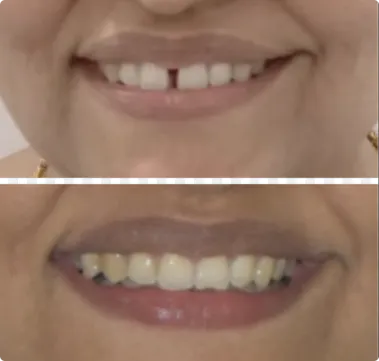

Find the best tooth crown cost at Orthosquare
Our patient's Experiences
Frequently Ask Questions
A dental crown is a restorative dental treatment that involves placing a cap or covering over a damaged or weakened tooth. This procedure is commonly utilised to address a variety of dental issues, such as decay, fractures, or structural damage that cannot be adequately resolved with simpler dental interventions. The crown, typically made from materials like porcelain, metal alloys, or a combination of both, encases the entire visible portion of the tooth above the gumline, providing strength, protection, and an aesthetically pleasing appearance. Dental crowns are versatile and can be employed in conjunction with other dental treatments like braces, teeth whitening, or dental bonding to enhance overall oral health and appearance. In certain instances, dental crowns play a crucial role in supporting other dental procedures. For example, after a root canal, where the infected pulp of a tooth is removed, a crown is often placed over the treated tooth to restore its strength and functionality. Additionally, dental crowns are integral components of fixed dental prosthetics like bridges, which are used to replace missing teeth. Whether as a standalone treatment or part of a comprehensive dental strategy that may include scaling and root planing, complete dentures, or tooth extraction, dental crowns contribute significantly to the restoration and preservation of dental health. The need for dental crowns can arise from various dental conditions, necessitating their integration into a comprehensive oral care plan. Patients with severely damaged or weakened teeth may require crowns to prevent further deterioration and maintain proper oral function. In cases of advanced decay or structural compromise, tooth extraction may become unavoidable, and dental crowns play a pivotal role in restoring the functionality and aesthetics of the smile post-extraction. Furthermore, crowns are often recommended to individuals undergoing orthodontic treatments like braces, providing additional support and protection to the teeth during the realignment process. Overall, whether addressing dental concerns independently or as part of broader treatments like scaling and root planing, dental crowns serve as integral components in promoting oral health and well-being.
A dental bridge is a prosthetic dental device used to replace one or more missing teeth by bridging the gap between adjacent natural teeth. It consists of a pontic, or artificial tooth, anchored on either side by dental crowns attached to the neighbouring teeth. Dental bridges are a viable solution for individuals who have lost teeth due to various reasons, such as decay, trauma, or extraction. This restorative treatment not only enhances the aesthetic appearance of the smile but also contributes to maintaining proper dental function and preventing issues that may arise from tooth loss. Dental bridges are often recommended as part of a comprehensive dental plan that may include other procedures like braces, teeth whitening, or scaling and root planing. The integration of dental bridges into a treatment plan is particularly relevant in cases where tooth extraction is necessary. Following the removal of a tooth, a bridge can be utilised to fill the gap, preventing adjacent teeth from shifting out of alignment and maintaining the integrity of the bite. Additionally, dental bridges play a crucial role in comprehensive dental rehabilitations that involve multiple restorative procedures, such as root canals or dental bonding. Their ability to seamlessly blend with natural teeth makes bridges an aesthetically pleasing option for individuals seeking to improve their smile's overall appearance. For those exploring options for complete dentures or partial dentures, dental bridges offer a fixed alternative that eliminates the inconvenience of removable prosthetics. While bridges are often considered in tooth replacement scenarios, they can also be integrated into broader cosmetic dentistry plans, including teeth whitening or dental bonding, to achieve a harmonious and attractive smile. Thus, whether addressing tooth loss independently or as part of a more extensive dental strategy, dental bridges serve as valuable components in restoring both the functionality and visual appeal of the smile.
Dental crowns are placed for a variety of reasons, primarily focusing on the restoration of compromised teeth. When a tooth undergoes significant decay or damage that surpasses what a dental filling can effectively address, a crown becomes necessary. The crown acts as a protective cap, encasing the entire visible portion of the tooth above the gumline, providing strength and durability. Following procedures like root canal therapy, where the inner pulp of a tooth is removed, a crown is often placed to safeguard the treated tooth, preventing fractures and maintaining its structural integrity. Moreover, dental crowns are integral components of comprehensive dental solutions, complementing treatments such as braces, teeth whitening, and dental bonding for a comprehensive approach to oral health. In cases where a tooth is weakened due to structural issues or extensive decay, a crown is employed to prevent further deterioration and potential tooth loss. Crowns are particularly crucial post-tooth extraction, ensuring the restoration of functionality and aesthetics. The placement of crowns following tooth extraction is often a key element in preserving proper bite alignment and preventing neighbouring teeth from shifting. Additionally, dental crowns offer support to individuals undergoing orthodontic treatments like braces, contributing to the overall success of realignment by providing additional strength to the teeth. Dental crowns also play a significant role in the creation of fixed dental prosthetics such as bridges. When replacing missing teeth with a bridge, crowns are attached to the adjacent natural teeth, serving as anchors for the artificial tooth or pontic. This application showcases the versatility of dental crowns as they seamlessly integrate into various dental procedures, whether as standalone treatments or part of a comprehensive plan that may include scaling and root planing, complete dentures, or dental bonding. Overall, the placement of dental crowns is a crucial aspect of modern dentistry, contributing to both the functional restoration and aesthetic enhancement of a patient's smile.
The materials used for dental crowns and bridges are diverse, catering to both functional and aesthetic requirements. Traditional materials for crowns include porcelain-fused-to-metal (PFM), which combines the strength of metal with the natural-looking appearance of porcelain. PFM crowns are often chosen for their durability and ability to withstand biting forces. All-ceramic or all-porcelain crowns are preferred when a more natural and translucent appearance is desired, making them a popular choice for front teeth or areas where aesthetics are a primary concern. Metal crowns, commonly made of gold or other alloys, are selected for their exceptional durability but are less commonly used in visible areas due to their metallic appearance. Similarly, the materials for dental bridges encompass a range of options. Traditional bridges often feature crowns made from materials like PFM or all-ceramic, serving as anchors for the artificial tooth or pontic that bridges the gap. The choice of material depends on factors such as the location of the bridge and the patient's aesthetic preferences. Advancements in dental technology have introduced zirconia as a popular material for both crowns and bridges due to its strength, durability, and aesthetic appeal. Zirconia restorations offer a natural tooth colour and are known for their biocompatibility, making them a versatile choice for various dental applications. In recent years, the development of metal-free materials, such as lithium disilicate and other high-strength ceramics, has expanded the options for crowns and bridges. These materials provide a balance of strength and aesthetics, making them suitable for a wide range of dental restorations. The selection of materials for crowns and bridges is a collaborative decision between the dentist and the patient, taking into consideration factors like the location of the restoration, functional requirements, and the patient's cosmetic preferences. Whether integrated into a comprehensive treatment plan involving braces, teeth whitening, or root canal therapy, the choice of crown and bridge materials reflects the evolving landscape of modern dentistry, emphasising both functionality and esthetics.
While dental bridges are generally effective and well-tolerated, there are potential side effects and considerations that patients should be aware of. One common concern is an increased susceptibility to gum disease. The crowns on either side of the bridge can create small spaces where bacteria may accumulate, leading to inflammation and potential infection. This underscores the importance of maintaining meticulous oral hygiene practices, including regular brushing, flossing, and dental check-ups. Incorporating scaling and root planing into the oral care routine can help mitigate the risk of gum issues associated with dental bridges. Another potential side effect of dental bridges is increased sensitivity. The preparation of natural teeth for crown placement may involve removing a portion of the enamel, which can make the teeth more sensitive to temperature changes. Individuals with bridges may experience discomfort when consuming hot or cold foods and beverages. While this sensitivity is often temporary, patients should communicate any persistent discomfort to their dentist. Additionally, the integration of dental bridges into a comprehensive oral health plan, which may include treatments like braces or teeth whitening, requires ongoing communication between the patient and the dental care team to address and manage any side effects. In some cases, the longevity of dental bridges can be influenced by factors such as the material used and the patient's oral hygiene habits. While bridges are designed to be durable, wear and tear over time may necessitate repairs or replacements. Patients with bridges should be aware of the importance of regular dental check-ups to monitor the condition of the restoration and address any issues promptly. Furthermore, individuals considering bridges as part of a broader dental strategy that involves procedures like root canal therapy, dental bonding, or tooth extraction should engage in open communication with their dentist to anticipate and manage potential side effects, ensuring the optimal success and longevity of their dental restorations.
Several alternatives to dental bridges exist, providing patients with options based on their unique dental needs and preferences. One common alternative is dental implants. Implants involve the surgical placement of artificial tooth roots into the jawbone, onto which crowns or bridges can be securely attached. Dental implants offer a stable and long-lasting solution for tooth replacement, promoting both functionality and aesthetics. This alternative is particularly beneficial for patients seeking a more permanent and independent option compared to traditional bridges. Partial dentures are another alternative to dental bridges, especially for individuals with multiple missing teeth. These removable appliances consist of artificial teeth attached to a framework that clasps onto existing natural teeth. Partial dentures offer flexibility and are suitable for those who may not be candidates for dental implants or prefer a non-invasive solution. They can be easily removed for cleaning and maintenance, providing a convenient option for patients with specific dental needs. For individuals with a single missing tooth, a resin-bonded bridge, also known as a Maryland bridge, presents a less invasive alternative. This type of bridge involves attaching an artificial tooth to adjacent natural teeth using metal or porcelain wings. While it may not offer the same level of stability as traditional bridges, a resin-bonded bridge can be a conservative and aesthetically pleasing option. Patients exploring alternatives to dental bridges should discuss their preferences and oral health goals with their dentist, considering factors such as the need for braces, teeth whitening, or other treatments within a comprehensive dental plan.
Directors & Cluster heads
Our administration and support staff all have exceptional people skills and Trained to assist you with all medical enquiries.

Dr. Kunal Shet
BDS, MDS, Orthodontics & Dentofacial Orthopedics, Implantologist (Masters in Cortical Implantology)
Dr. Kunal Shet is a distinguished dentist with an impressive academic background, including a postgraduate degree in Orthodontics and Dentofacial Orthopedics.

Dr. Riddhi Rathi Shet
BDS, MDS in Orthodontics & Dentofacial Orthopedics, Masters in Cortical and Immediate loading Implantologist (Italy), Masters in Advance Implantology (Smile USA)
Dr. Riddhi Rathi Shet is a highly qualified dental professional with an impressive academic background, including BDS and MDS degrees.

Dr. Sayali Jadhav
BDS, Fellowship in esthetic dentistry and Occlusion Certified Implantologist
Dr. Sayali Jadhav is a highly regarded Certified Implantologist and Esthetic Dentist. Her dental journey commenced in 2014 when she completed her BDS from Dr. DY Patil University.

Dr. Isha Jain
BDS
Dr. Isha Jain, a highly distinguished dentist who proudly graduated from Dr. D. Y. Patil Vidyapeeth, Pune in 2017.

Dr.Akhil Nair
BDS Implantologist
Dr. Akhil Nair is a highly accomplished Certified Implantologist, known for his remarkable contributions to the field of dentistry.

Dr. Akash Balaji Iyer
BDS, MDS Periodontology and Oral Implantology
Dr. Akash Balaji Iyer, an accomplished dentist specializing in Periodontics & Oral Implantology, is a vital part of Orthosquare's expert team.

Dr. Apurva Vaidya
BDS, MDS (Oral and maxillofacial surgery) Implantologist
Dr. Apurva Vivek Vaidya, BDS, MDS in Oral and Maxillofacial Surgery, stands as a distinguished dental professional with specialized expertise in oral and maxillofacial surgery.

Dr. Ruchi Bhansali
Dr. Ruchi Bhansali is a Dentist, Aesthetic smile design, Implantologist, and Periodontology.
Dr. Ruchi Bhansali is a highly qualified and compassionate dentist dedicated to delivering personalized dental care.

Dr. Divya Navsariwala Iyer
BDS. Specialist in Cosmetic Dentistry & Smile Designing.
Dr. Divya Navsariwala Iyer, a distinguished dentist and Smile Designing Specialist, holds the position of Regional Head for Pune at Orthosquare. With a BDS degree from Pravara Institute of Medical Sciences and a remarkable decade of clinical experience, she is recognized for her expertise in smile designing, aesthetics, and dental veneers.

Dr. Dhwani Doshi
BDS
Dr. Dhwani Doshi, BDS, is a distinguished dentist with a specialization in cosmetic dentistry, smile designing, and root canals, holding a certification as an FMR specialist. Graduating from MGM Dental College, Navi Mumbai, in 2013-17, she brings a strong academic foundation to her practice.

Dr. Nehal Gandhi
BDS
Dr. Nehal Gandhi, a distinguished Dental surgeon and Director at Orthosquare Multi-speciality Dental Clinic, stands as a prominent figure in the field of dentistry.

Dr. Shraddha Kambale
BDS
Dr. Shraddha Kambale holds the esteemed position of Regional Dental Director and is a highly proficient general dentist with over 16 years of practice.

Nilay Vakharia
BDS, MDS (Oral & Maxillofacial Surgery)Implantologist.
Dr. Nilay Vakharia, an OMFS (Oral & Maxillofacial Surgery) specialist, completed his post-graduation in OMFS from Pacific Dental College in 2017.
.webp)
Dr. Shail Kothari
BDS, Specializing in Implantology.
Dr. Shail Kothari is a highly skilled dental professional, specializing in Implantology and Endodontics. He completed his graduation from Dr. D. Y. Patil University in Mumbai and pursued his master's degree in Dentistry from esteemed institutions in Bangalore and the USA.

